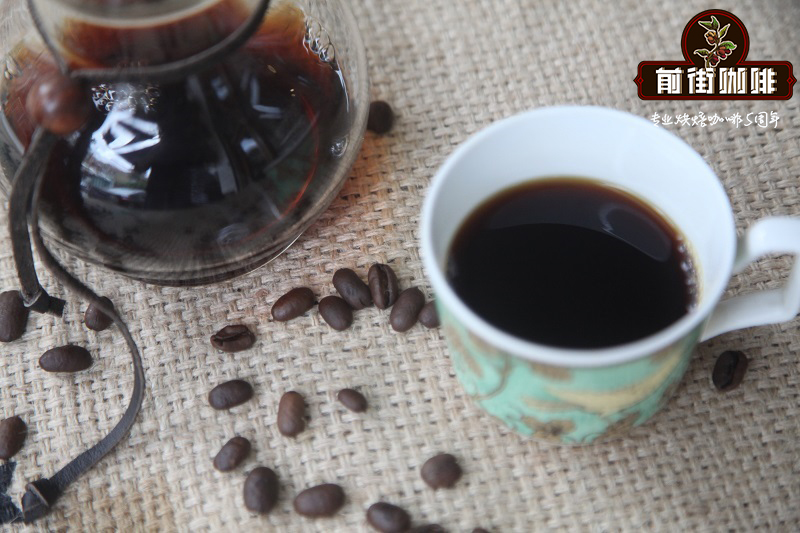Arabica family-which belong to Arabica coffee beans _ what coffee beans does Arabica have

Professional coffee knowledge exchange more coffee bean information please follow the coffee workshop (Wechat official account cafe_style)
What kind of seeds did I buy?
I believe that many friends, and even peers have no lack of these experiences, when buying coffee raw beans / cooked beans, they will see information about the tree species of this coffee.
When the editor saw a coffee bean from Kenya, he also wondered, what on earth is the name of SL28,SL34? (Hey, don't drive at odds with each other.)
In fact, these are two tree species derived from the bourbon gene mutation, which is the national treasure of Kenyan coffee. What about the tree species? what are the trees? I'll decrypt it for you later.
What's wrong with this tree? it looks so awesome. Yes, this is the relationship among the tree species of Rubiaceae-Coffee family. The kinship map of the seventh aunt and the eighth uncle is very weak.
Are you better or your brother in the ● tree species dispute?
Why don't you drink the beans? God knows what kind of drink you're drinking! Speaking of tree species, you can really write a TV series.
A bloody struggle between empires, brothers with knives, family romance, all in the coffea arabica empire.
More than a thousand years ago, on the Ethiopian plateau, a pioneer in the coffee tree world officially began the journey of world conquest after demonstrating his unparalleled power to mankind in a flock of sheep.
Among them, there is a powerful tribe-Arabica, although there are many diseases of wealth and honor, but with its excellent pedigree in flavor, acidity and taste, it has established a huge empire that accounts for 70% and 80% of the territory in the coffee world.
On the other hand, with its tenacious vitality, the coffea robusta linden tribe, which accounts for only 20 per cent of the 30 per cent of the world's territory, is unmatched, let alone the declining coffea liberica tribe.
In the empire established by ● in Arabica, the Ethiopian native species, the Tieka, and the Bourbon clan became a tripod.
● iron pickup Typica
Typica, as the oldest eldest brother, has less and less appearance in recent years, and his territory is maintained by several excellent sons. Several common variants are listed below.
For example, the elephant bean (maragogype), which is three times bigger than conventional Arabica, is famous for its largest size in the world.
Blue Mountains, Kona, Hawaii, and Sumatran tin cards are famous for their Jamaican Blue Mountain Coffee.
● bourbon Bourbon
The performance of the Bourbon clan was excellent, and the mocha round beans became famous after they emigrated to Bourbon Island. There are many of the best-performing branches, and many varieties are well known outside. Such as Kaddura, Pacas, Huang bourbon, pointed body bourbon (very low caffeine content, unique flavor, extremely rare), Vera Saatchi and so on.
Several common variants are listed below.
● talks about yellow bourbon. Coffee berries are usually red when ripe, but yellow bourbon is yellow. It's fun, isn't it? it looks like the fruit yellow skin of the south.
There is a little gossip here, but there is no way to prove it. It is said that Bourbon is the illegitimate child of the tin pickup. (well, it has a strange smell. )
● Ethiopian native species Landrace
Ethiopian native species, with a more complex system, is an ancient organization that is difficult to separate, such as the Ethiopian Yega snow coffee, which is usually named as Heirloom.
The most outstanding offspring is geisha / geisha, a wandering prince who rose to fame in Panama after a long period of time and many places, and has since been out of control and distinguished himself with his elegant posture.
In fact, when it comes to native species, beans such as java, kaffa and Gimma are listed. The following are common varieties.
Iron pickup X bourbon X Luodou are here?
Then there is the most messy gossip part of your circle.
●, let's start with something purer.
For example, the Pacamara at the beginning of the film is a hybrid of Pacas (Pacas) and Maragogype (elephant bean). It doesn't matter if I don't understand. we have the picture above.
The elephant beans of the iron pickup family (Maragogype) and the bourbon family's Kaddura (Caturra) gave birth to Maraka Maracaturra.
The family in the back is more complicated.
The Sumatran iron pickup from the Tippika clan and the prince of Bourbon gave birth to the New World (Mundo novo).
New World later crossed with Kaddura of the Bourbon family to give birth to Catuai.
Kaduai gave birth to Maraka du (Maracatu) with Maragogype of the Tippika family.
Yes, it is only a word difference from the pure child above. So the question comes again: is the iron pickup Malakadu's grandfather or grandpa's grandfather?
The above are all hybrid (chaotic) pairing between Arabica, what about X Luodou? There are also such examples.
Kaddura of the bourbon family (yes, Kaddura, the slut again) and Cinderella Timor of the poor clan Robasta gave birth to Catimor. In fact, Timo is also a hybrid of an Arabica and a Robasta. See the picture for details.
The disease resistance was improved and the yield was also high, but the Katimo child failed to integrate his father's aristocratic pedigree and learned enough of his mother's shortcomings that he later hoped to get an offspring that incorporated the advantages of his parents through the self-breeding of future generations. but not very successful. So we can see that Cartimo has a lot of offspring branches, the more famous of which are Costa Rica 95, Katisk, Colombia, and the new descendant Castillo Castillo of Colombia.
Finally, there is a native species of Rume sudan (Timor), a descendant called Ruiru 11, which is very common in Kenya.
Finally, ● will sort out a complete tree species diagram for you. Click on the larger picture (tou) color (yun).
The editor has fainted, asking for a drop of essential oil.
Write at the end
In fact, it is good to be familiar with one or two of the above parts, because several great clans have begun to break the boundaries, hoping to get offspring with a variety of advantages through marriage. Although the status of several princes who have performed well at present seems to be unshakable, there is no guarantee that there will be no hybrids comparable to them in the future. And there is likely to be a very long string.
● said it was fun. Tell me a piece of old news from the coffee industry last year.
As a branch of Catimor, Castillo has three characteristics: high yield, strong disease resistance, strong flavor, seven forms, and can be suitable for complex soil and water environment.
Since 2014, SCAA has been working with the Colombian government to launch a cup quality competition between Castillo and Kaddura, a direct variant of Bourbon. The results were also posted on the SCAA website in April 2015.
The following are the three-round averages of Castillo and Caturra. Castillo played the next city in the blind test in the first round, and the next two rounds were lost, but the scores were almost neck and neck. In the table, it is not difficult to see that the average score of Castillo is obviously better than that of Caturra at the interval of three rounds. The low segment of the three rounds of Caturra was much lower than that of Castillo, and the instability of purebred began to be revealed.
● and most frightening of all, the output of Castillo is much higher than that of Caturra. Foreign websites even put out such headlines:
Castillo vs.Caturra ≠ Quantity vs. Quality
It means that Castillo is not only better than output. The quality can also compete with Caturra.
Interested partners can go to the scaa official website to watch the process of the competition, as well as reports.
This year, World Coffee Research, which focuses on producing areas and coffee breeding, boasts that in less than 10 years, we will develop a new coffee tree that has the good flavor of Caturra (and even Rosa Geisha) and the same high yield as Costa Rica 95.
Let's look forward to it.
In order to avoid the complexity of the introduction process of tree species, this paper abandons the specific flavor introduction of tree species and the introduction of regional distribution.
● Arabica Coffee Bean Brand recommendation
Arabica coffee beans baked in front street coffee are fully guaranteed in terms of brand and quality. And more importantly, the performance-to-price ratio is extremely high, each pack of 227 grams, the price is only 70-90 yuan or so. According to the calculation of 15 grams of coffee beans per cup, a bag of coffee can make 15 cups of coffee, which costs only about 5 or 6 yuan per cup, which is recommended by conscience compared to the price of hundreds of cups sold in cafes.
Qianjie coffee: Guangzhou bakery, the store is small but a variety of beans, you can find a variety of unknown beans, but also provide online store services. Https://shop104210103.taobao.com
Important Notice :
前街咖啡 FrontStreet Coffee has moved to new addredd:
FrontStreet Coffee Address: 315,Donghua East Road,GuangZhou
Tel:020 38364473
- Prev

What is the description of coffee flavor? How do you explain the flavor of coffee? A description of the taste of coffee
Professional coffee knowledge exchange more coffee bean information please follow the coffee workshop (Wechat official account cafe_style) if you like coffee and are interested in coffee, Qianjie Coffee is very recommended that you participate in the cup test activity, in order to explore the environment of the origin and the treatment of raw beans can have any impact on the coffee flavor. The coffee cup test originated from the coffee trade in the late 19th century.
- Next

What is 100% Arabica coffee _ how to buy Arabica coffee beans
Professional coffee knowledge exchange more coffee bean information Please follow the coffee workshop (Wechat official account cafe_style) when we drink coffee, mostly because of the refreshing demand for caffeine, we seldom pay attention to, or do not know the difference between coffee and beans, let alone that there will be a huge difference in flavor and taste. You can only hear it in advertisements.
Related
- Beginners will see the "Coffee pull flower" guide!
- What is the difference between ice blog purified milk and ordinary milk coffee?
- Why is the Philippines the largest producer of crops in Liberia?
- For coffee extraction, should the fine powder be retained?
- How does extracted espresso fill pressed powder? How much strength does it take to press the powder?
- How to make jasmine cold extract coffee? Is the jasmine + latte good?
- Will this little toy really make the coffee taste better? How does Lily Drip affect coffee extraction?
- Will the action of slapping the filter cup also affect coffee extraction?
- What's the difference between powder-to-water ratio and powder-to-liquid ratio?
- What is the Ethiopian local species? What does it have to do with Heirloom native species?

